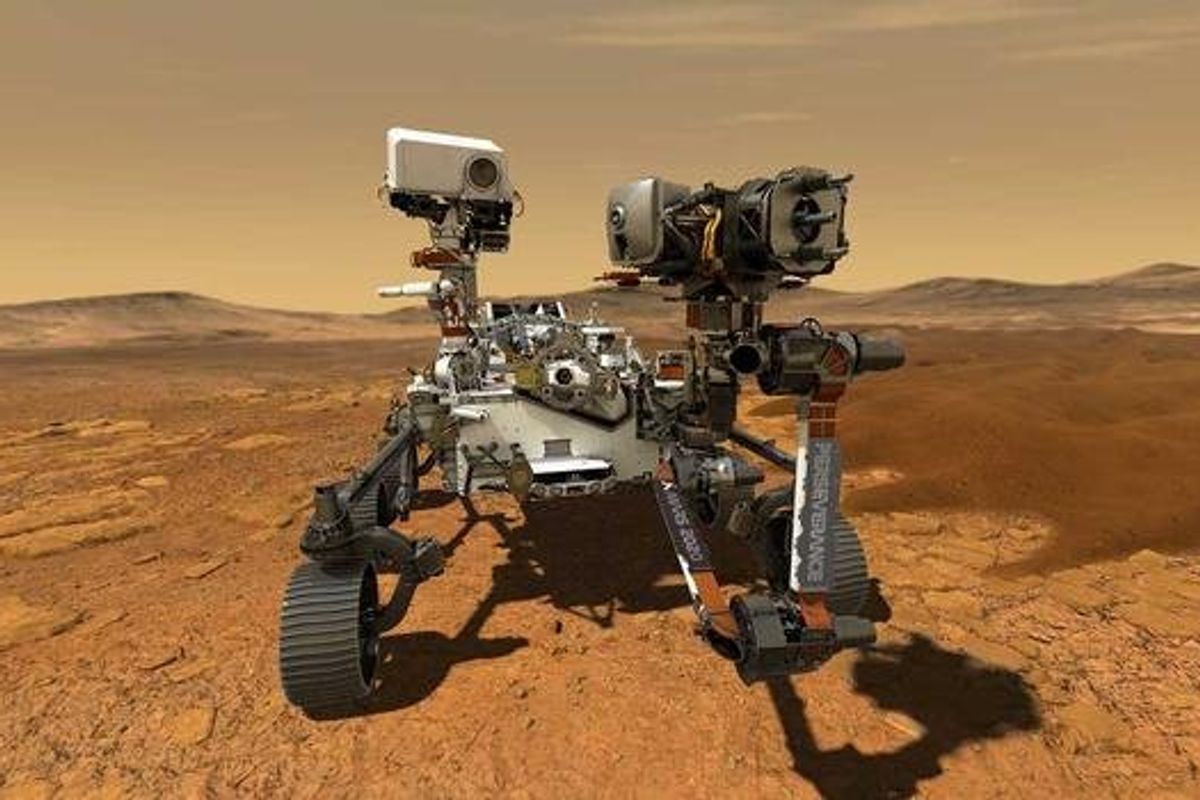Harriet Brewis
Jun 12, 2024
Morning frost spotted on Mars where it was thought 'impossible to exist'
PA
David Bowie isn’t the only person who’s wanted to know whether there’s life on Mars. Indeed, it’s a question that’s plagued scientists for centuries.
Now, experts suggest, the answer may lie in deep holes which pockmark the red planet.
These pits are found on the sides of ancient volcanoes in Mars’s largest Tharsis region, which is famous for being home to some of the largest volcanoes in the solar system.
Experts believe that these once-fiery behemoths are now inactive, but note residual lava tubes may still exist deep underground, Business Insider reports.
Brandon Johnson, a geophysicist at Purdue University, told the news site that the mysterious holes could be directly related to these lava tubes.
He said they were likely “skylights”, or places where the ground above the tubes has caved in, leaving a gaping hole in the surface.
If true, these holes could be one of the best places to search for alien life, because they could offer a protective sanctuary from the planet's harsh surface.

Lava tubes on the Moon, for example, can record temperatures of up to 17C (63F), which is certainly warm enough to nurture life.
The issue is that scientists don’t know how warm lava tubes on Mars would be, and they currently only have very limited information about the planet’s enigmatic holes.
The only details they have so far gleaned from the pits are what they can see from orbiting cameras, most notably NASA’s powerful HiRISE telescope.
And whilst this has snapped more than 80,000 images of the red planet, transforming our knowledge of its terrain, it can only do so much.
"Unfortunately, there is a limit to the 'angle' that we can get from orbit to look 'into' these pits,” Ross Beyer, a planetary scientist with the SETI Institute, told Business Insider.
“So sometimes we can see 'walls' and sometimes we can't."
Johnson seconded this, adding that the best way to explore the holes would be to physically enter them using a rover, noting: "There are missions proposed to essentially have a robot go on a line and drop down into one of these skylights and be able to explore what's inside of them.”

Looking further ahead, the experts suggested that these potential lava tubes could serve as ideal living quarters for astronauts visiting Mars.
“They're places where astronauts might be able to go and be safe from radiation,” Johnson remarked, pointing out that there’s more than one of them, leaving our extraterrestrial explorers with options.
Nevertheless, it’s worth stressing that we currently don’t know how deep they are or where they lead. We can only speculate on their potential based on our knowledge of lava tubes on other planets, namely our own.
"On the Earth, these lava tubes can be large enough to walk around in, but they can also be small or the voids can be discrete or discontinuous," Beyer explained.
"So these pits we see could open into larger caves, or they could just be isolated pits.
"There's no way to know what's in them until we explore them in more detail."
Sign up for our free Indy100 weekly newsletter
How to join the indy100's free WhatsApp channel
Have your say in our news democracy. Click the upvote icon at the top of the page to help raise this article through the indy100 rankings
Top 100
The Conversation (0)














